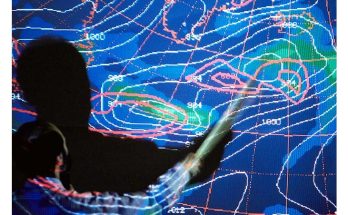“The Quest to Make a Bot That Can Smell as Well as a Dog: Scientists are trying to crack the code of how smell works—and create robots that can sniff out the world’s secrets like a dog.”
Print Edition Title: “Right Under Our Noses”
WIRED, October 24, 2019
Business
By Sara Harrison
“Andreas Mershin believes we don’t have to understand how mammals smell to build an artificial nose. He’s betting that things will work the other way around.”
The dogs still make Andreas Mershin angry. “I mean, I love dogs,” says the Greek-Russian scientist, in his office at MIT. “But the dogs are slapping me in the face.”
He pulls up a video to show me what he means. In it, a black dog named Lucy approaches a series of six stations, each separated by a small barrier. At every one, a glass cup of human urine with a screened lid sits at the level of the animal’s nose. Lucy takes a brief sniff of each sample, sometimes digging her snout in to get a better whiff. She is performing a kind of diagnostic test: searching for the telltale scent of prostate cancer, which, it turns out, leaves a volatile, discernible signature in a man’s pee. Discernible if you’re a dog, anyway. When Lucy finds what she’s looking for, she sits down and receives a treat.
Among humans—whose toolmaking prowess has given the world self-driving suitcases and reusable rocket boosters—prostate cancer is notoriously difficult to detect. The prevailing method is to check a patient’s blood for elevated levels of a protein called prostate-specific antigen. But the test has a miserable track record. The scientist who first discovered PSA has described the test as “hardly more effective than a coin toss.” A false positive can lead to a prostate biopsy, a harrowing procedure that involves inserting a large, hollow needle through the wall of the rectum to retrieve a tissue sample from the prostate itself.
Properly trained dogs, on the other hand, can detect prostate cancer with better than 90 percent accuracy, and with sleek, tail-wagging efficiency. In the video, Lucy works her way through six samples in just a couple of minutes. This drives Mershin up the wall. “We have $100 million worth of equipment downstairs. And the dog can beat me?” he says. “That is pissing me off.”
Mershin is not a doctor. He’s a physicist by training. He runs a lab called the Label Free Research Group, which exists to spite the boundaries between physics, biology, materials science, and information science. In his office, Mershin keeps a pair of sunglasses that can measure brain waves, along with magazines on aviation and books on urology, the physics of consciousness, and coding in Python. He speaks rapidly in an accent that sits somewhere between his two native languages, and he changes subjects at the slightest provocation. He refuses to wear matching socks, because why should socks match? He is short and round, with a mane of strawberry blond curls that bounce when he gets excited.
Mershin’s lab, where he keeps that $100 million worth of equipment, sits a few floors down from his office at MIT. In one room, researchers are trying to invent new colors; in another, to create the lightest, strongest materials on earth. But I’m here because this facility is doing some of the most important research in the world toward developing AO—artificial olfaction.
…
In May 1914, Alexander Graham Bell delivered a commencement address to some high school students in Washington, DC. The 67-year-old inventor of the telephone gave a peculiar speech—a crotchety ode to observation, measurement, and gumshoe curiosity. He spent much of his time proposing areas of investigation for his teenage audience to take up. “Did you ever try to measure a smell?” he asked. “What is an odor? Is it an emanation of material particles in the air, or is it a form of vibration like sound?” he asked. “If it is an emanation, you might be able to weigh it; and if it is a vibration, you should be able to reflect it from a mirror,” he went on. “If you are ambitious to found a new science, measure a smell.”
More than a century later, no one has yet been able to measure a smell, and there is even still some debate as to whether smell is a vibration or a chemical interaction between particles. (The vibration theory is far more controversial, but no one understands olfaction well enough to dismiss it entirely.) In fact, it wasn’t until 1991 that scientists were able to map the basic genetic and physiological building blocks of mammalian olfaction. That year, biologists Linda Buck and Richard Axel published a seminal paper; they discovered about 1,000 genes that code for about 1,000 olfactory receptors in mice, and they showed that those receptors are the beginning of a mammal’s sense of smell. They live in the olfactory epithelium, a thin piece of tissue that sits at the top of the nasal cavity, right where it meets the skull. When we take a deep breath, we suck the volatile molecules in the room up our noses toward those receptors. When the receptors interact with molecules, they set off a chain reaction that ends by sending a message to our brains.
About the Author:
Sara Harrison is a freelancer who covers science and business. She is a graduate of the UC Berkeley School of Journalism and Carleton College.
See also:






